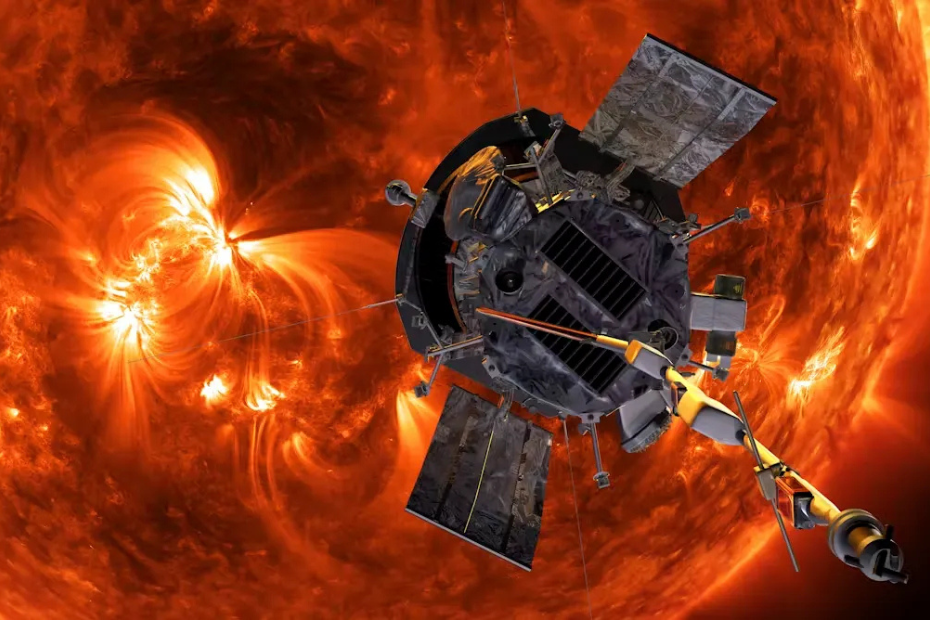The Sun, our life-giving star, continuously emits a stream of charged particles known as the solar wind. This constant outflow, though invisible to the naked eye, has a profound impact on our solar system, influencing everything from Earth’s magnetic field to the formation of planetary atmospheres. For decades, scientists have sought to understand the intricate mechanisms that drive this phenomenon. Thanks to recent advancements in space exploration and cutting-edge research, we are now closer than ever to unlocking the secrets of the solar wind.
The Solar Wind: A Cosmic River
The solar wind originates from the Sun’s outermost layer, the corona, a region of extremely high temperature. This intense heat energizes particles, allowing them to escape the Sun’s gravitational pull and flow outward into space. The solar wind is composed primarily of protons and electrons, along with a smaller number of heavier ions, such as helium nuclei.
The speed and density of the solar wind vary over time and space, influenced by solar activity cycles and other factors. During periods of high solar activity, such as solar flares and coronal mass ejections (CMEs), the solar wind can intensify, leading to geomagnetic storms on Earth that can disrupt power grids and satellite communications.
Unraveling the Mystery: Key Missions
To gain a deeper understanding of the solar wind, scientists have launched a series of dedicated space missions. Two of the most notable are NASA’s Parker Solar Probe and ESA’s Solar Orbiter.
NASA’s Parker Solar Probe
Launched in 2018, the Parker Solar Probe is a groundbreaking mission designed to study the Sun’s corona and solar wind up close. This intrepid spacecraft has made multiple close approaches to the Sun, venturing closer than any previous mission. By collecting in-situ measurements of the solar wind’s properties, the Parker Solar Probe has provided unprecedented insights into the mechanisms that accelerate and heat the solar wind.
ESA’s Solar Orbiter
The Solar Orbiter, a joint mission between ESA and NASA, is another key player in solar wind research. Launched in 2020, this spacecraft is on a mission to study the Sun’s polar regions, which are largely unexplored. By observing the Sun from different vantage points, the Solar Orbiter aims to provide a more comprehensive view of the solar wind’s origins and evolution.
New Discoveries and Insights
Through the combined efforts of these missions and other ground-based observatories, scientists have made significant strides in understanding the solar wind. Some of the key discoveries include:
- Magnetic Reconnection: This process, in which magnetic field lines break and reconnect, plays a crucial role in accelerating the solar wind. By studying magnetic reconnection events, scientists can gain insights into the underlying physics of the solar wind.
- Alfvén Waves: These waves, which propagate along magnetic field lines, are thought to transport energy from the Sun’s interior to the corona, contributing to the heating of the solar atmosphere.
- Coronal Heating Problem: One of the long-standing mysteries in solar physics is the coronal heating problem, which refers to the fact that the Sun’s corona is significantly hotter than its surface. Recent observations from the Parker Solar Probe and other missions have provided new clues about the mechanisms responsible for this phenomenon.
The Future of Solar Wind Research
As our understanding of the solar wind continues to deepen, scientists are increasingly focused on predicting space weather events, which can have significant impacts on Earth and space-based technologies. By studying the solar wind’s behavior and its interaction with Earth’s magnetic field, researchers can develop more accurate models to forecast geomagnetic storms and other space weather phenomena.
Furthermore, the study of the solar wind has implications for our understanding of other astrophysical phenomena, such as stellar winds and the interstellar medium. By exploring the Sun’s influence on its surroundings, we can gain insights into the fundamental processes that shape the universe.
In conclusion, the solar wind is a complex and dynamic phenomenon that has captivated scientists for decades. Through the combined efforts of space missions, ground-based observatories, and theoretical modeling, we are now beginning to unravel the mysteries of this cosmic river. As our knowledge grows, we will be better equipped to protect our planet from the potential hazards of space weather and to explore the far reaches of the solar system and beyond.

